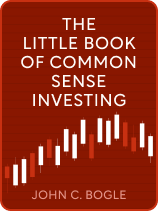

This article is an excerpt from the Shortform book guide to "The Little Book of Common Sense Investing" by John C. Bogle. Shortform has the world's best summaries and analyses of books you should be reading.
Like this article? Sign up for a free trial here.
What percentage of your portfolio should be comprised of bonds? What are some things you should consider when deciding on how much to invest in bonds relative to stocks?
There’s no universal, ideal stocks-to-bonds ratio in a portfolio. When it comes to asset allocation, the rule of thumb is to base it on your financial circumstances and your risk tolerance.
Here’s how to decide how much to invest in bonds relative to equity, according to Jack Bogle.
The Ratio of Equity to Bonds
According to Jack Bogle, the author of The Little Book of Common Sense Investing, the ideal stocks-to-bonds ratio depends on your financial position and your personal degree of risk aversion.
To start, Bogle cites Benjamin Graham’s advice in The Intelligent Investor that your portfolio should be split 50-50 between stocks and bonds. Although Bogle considers this a good starting point, he argues that it’s too rigid: Certain investors should incur more risk, investing more in stocks, while other investors should incur less risk, investing more in bonds.
(Shortform note: To further diversify your portfolio, some experts recommend alternative investments beyond just stocks and bonds. For example, investing in real estate can provide additional income and is generally less volatile than the stock market. Moreover, you can consider investing in gold, which is fairly insulated from the stock market’s ebbs and flows. Such investments can provide further protection against dips in the stock and bond markets.)
Bogle argues that your financial position affects your ability to take risks. For example, those with financial liabilities looming in the near future—like purchasing a home, or paying to raise a child—should be less risky with their investments. After all, if they’ve only invested in stocks, then they might not be able to cover these liabilities if the market crashes. By contrast, investors with fewer liabilities can afford a riskier allocation of stocks to bonds.
Beyond financial position, Bogle argues that your personal preferences for risk aversion should affect your asset allocation. For example, if the ebbs and flows of the market cause you extreme stress about potentially losing money, then your portfolio should contain fewer stocks and more bonds. On the other hand, investors comfortable with greater risk to earn higher returns should have a higher ratio of stocks to bonds in their portfolios.
(Shortform note: One reason why many of us struggle to cope with the market’s fluctuations is that we suffer from loss aversion—the notion that the pain of losing is psychologically stronger than the joy of winning. For example, the pain most investors experience when their portfolio dips by 2% is stronger than the happiness they experience when their portfolio rises by 2%. However, because loss aversion doesn’t maximize expected utility, some have argued that it’s irrational and should be suppressed.)
More generally, Bogle advises that your ratio of stocks to bonds should be as high as your financial position and risk aversion allows. For example, he counsels an 80-20 split of stocks to bonds for young investors with low risk aversion who want to grow their wealth. Conversely, for retirees whose portfolios fund their retirement, Bogle counsels a 25-75 split. Because retirees are more concerned with short-term stability than long-term growth, they benefit from the stability of bonds rather than stocks.
(Shortform note: Because stocks provide greater long-term returns than bonds, it’s tempting to think that young investors should invest exclusively in stocks. However, other experts caution that this practice fails to consider investor psychology: Because investors are often inclined to sell when stocks are down, investing only in stocks can yield unwise decisions when markets drop. Conversely, owning bonds provides psychological comfort that minimizes the risk of selling stocks when they drop.)

———End of Preview———
Like what you just read? Read the rest of the world's best book summary and analysis of John C. Bogle's "The Little Book of Common Sense Investing" at Shortform.
Here's what you'll find in our full The Little Book of Common Sense Investing summary:
- A simple winning strategy for novice investors
- Why index funds are superior to mutual funds
- Why bonds belong in your investment portfolio





